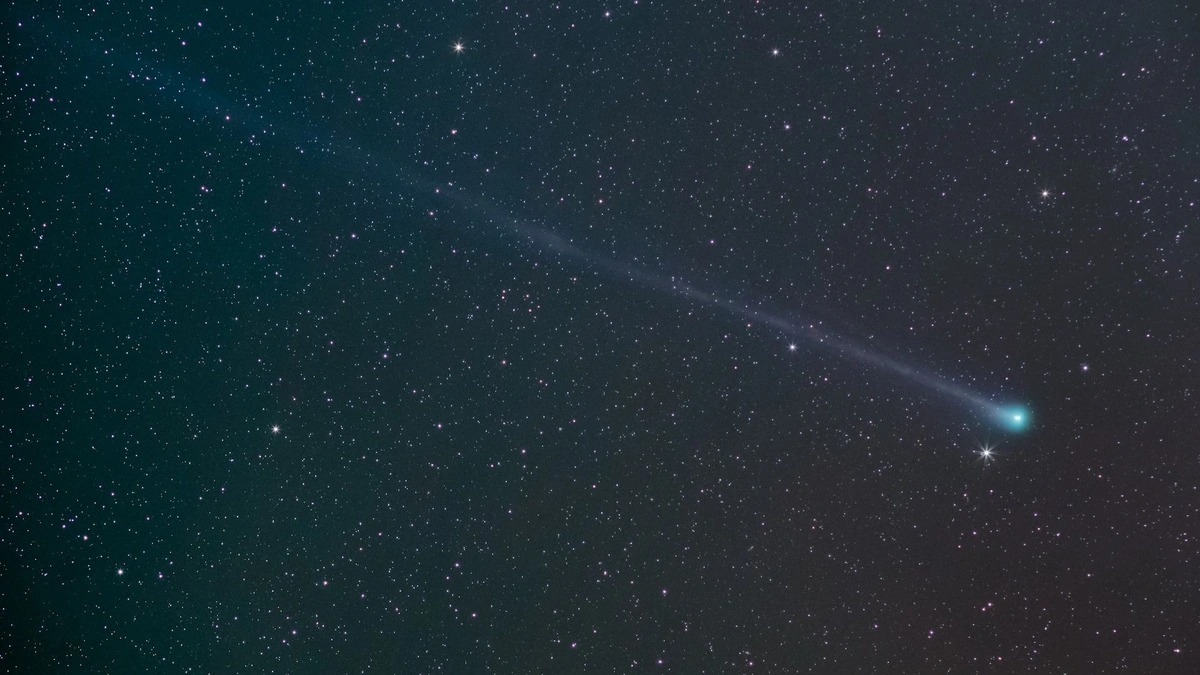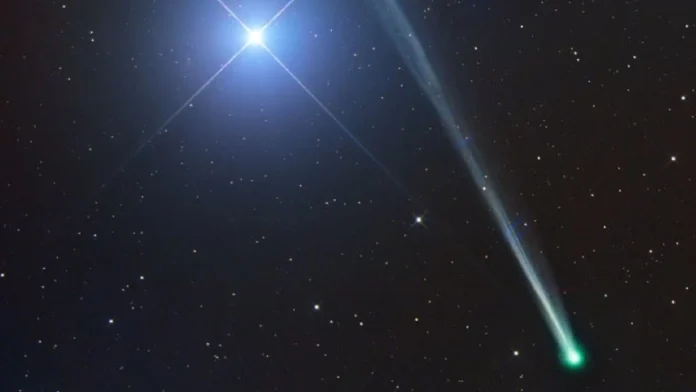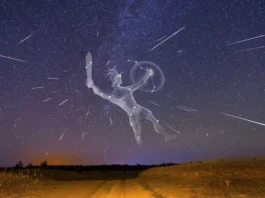Alright, stargazers and sky enthusiasts, gather ’round! There’s a new celestial visitor making its way through our cosmic neighborhood: Comet SWAN , officially known as C/2025 R2. Now, I know what you’re thinking: “Another comet? Will this one actually be visible?” Let’s be honest, most comets are just fuzzy blobs requiring binoculars and a whole lot of patience. But, this one… this one might just give us a show. And that’s why you need to pay attention.
Why This Comet is Different (and Why You Should Care)

Here’s the thing: not all comets are created equal. Comet SWAN, discovered by the Solar Wind Anisotropies (SWAN) instrument aboard the SOHO spacecraft (NASA SOHO), is making a relatively close approach to Earth. A close approach doesn’t guarantee naked-eye visibility, but it certainly increases the chances. Plus, early observations suggest it’s behaving nicely – meaning it’s not fizzling out prematurely.
But, why does this matter? Well, seeing a comet with the naked eye is a unique experience. It connects you to something bigger than yourself, a tiny speck of cosmic dust and ice that has travelled potentially billions of miles to grace our skies. It’s a reminder of the vastness and wonder of the universe. And in our increasingly digital and indoor lives, that’s something pretty special. According to space.com , comets are cosmic snowballs of frozen gases, rock and dust. And seeing one requires a good eye for detail.
How to Watch Comet SWAN | Your Step-by-Step Guide
Okay, so you’re intrigued. Awesome! Here’s how to increase your chances of seeing Comet SWAN next week:
- Find a Dark Sky: Light pollution is the enemy. The further you are from city lights, the better. Use a light pollution map (easily searchable online) to find a dark spot near you.
- Check the Timing: Comet SWAN will be closest to Earth next week. Consult astronomy websites or apps (like Stellarium or SkyView) for the exact dates and times of peak visibility in your location. Typically, comets are best viewed shortly before dawn or after dusk, when the sky is dark but the Sun is just below the horizon.
- Look in the Right Direction: Again, your astronomy app is your friend here. It will tell you the comet’s approximate location in the sky (e.g., low in the northeastern horizon).
- Use Binoculars (Maybe): Even if Comet SWAN is technically visible to the naked eye, binoculars will enhance the view significantly. They’ll help you spot the comet’s faint tail and subtle details.
- Be Patient: Stargazing requires patience. Your eyes need time to adjust to the darkness (about 20-30 minutes). Don’t give up after a few minutes; keep scanning the sky.
What Factors Affect Visibility?
Let’s be honest – there are no guarantees. Several factors can impact whether you actually see the comet :
- Weather: Clouds are the obvious spoiler. Check the forecast before you head out.
- Light Pollution: As mentioned earlier, minimize your exposure to artificial light.
- Comet Brightness: Comets are notoriously unpredictable. Their brightness can change dramatically in a matter of days. We’re relying on predictions, which are not always accurate.
- Your Eyesight: Some people have better night vision than others. If you wear glasses, make sure they’re clean!
The Science Behind the Spectacle
What fascinates me is the sheer physics involved. Comets are essentially dirty snowballs from the outer solar system. As they approach the Sun, the heat causes their icy surfaces to vaporize, releasing gas and dust. This creates the comet’s coma (the fuzzy atmosphere around the nucleus) and its tail, which is pushed away from the Sun by solar wind and radiation pressure.
The SWAN instrument, which discovered this comet, is designed to study the solar wind. It detects hydrogen atoms released by comets as their ice sublimates. So, in a way, Comet SWAN’s discovery is a direct result of understanding the Sun’s influence on these icy wanderers. Internal Link: https://ustrendsnow.com/
Other celestial event
It is important to know other celestial event that are coming up. These include meteor showers, solar eclipses, lunar eclipses and other comet sightings. Knowing these would give you an oppurtunity to enjoy the beauty of our solar system. This comet is expected to reach the Earth during the next week, so keep your eye out!
FAQ About Spotting Comet SWAN
Frequently Asked Questions
Will Comet SWAN definitely be visible to the naked eye?
Unfortunately, there’s no guarantee. Comet brightness is notoriously difficult to predict. It depends on factors like the comet’s composition, its distance from the Sun and Earth, and even the amount of dust in the atmosphere.
What if I can’t find a truly dark sky?
Even if you’re in a moderately light-polluted area, it’s still worth trying. Use binoculars, and focus on the darkest part of the sky you can find. You might still be able to glimpse the comet.
Is there a specific time I should look?
Check an astronomy app or website for the optimal viewing time in your location. Generally, shortly before dawn or after dusk is best.
What if the weather is cloudy?
Unfortunately, there’s not much you can do about clouds. Keep an eye on the forecast, and hope for a clear night!
How can I take pictures of the comet?
Astrophotography can be challenging, but even a smartphone can capture something. Use a tripod to stabilize your camera, and experiment with long exposure settings.Royal Museum Greenwichhas a guide on photographing a comet.
Where can I find more information about Comet SWAN?
Search for reputable astronomy websites or apps. NASA’s website is also a great resource. Be wary of unverified information on social media.
So, will Comet SWAN live up to the hype? Only time will tell. But the possibility of witnessing a naked-eye comet is enough to get any stargazer excited. So, get out there, find a dark spot, and look up! You might just witness something truly spectacular. And even if you don’t see the comet, you’ll still be under a blanket of stars – and that’s never a bad thing. Internal Link: https://ustrendsnow.com/




